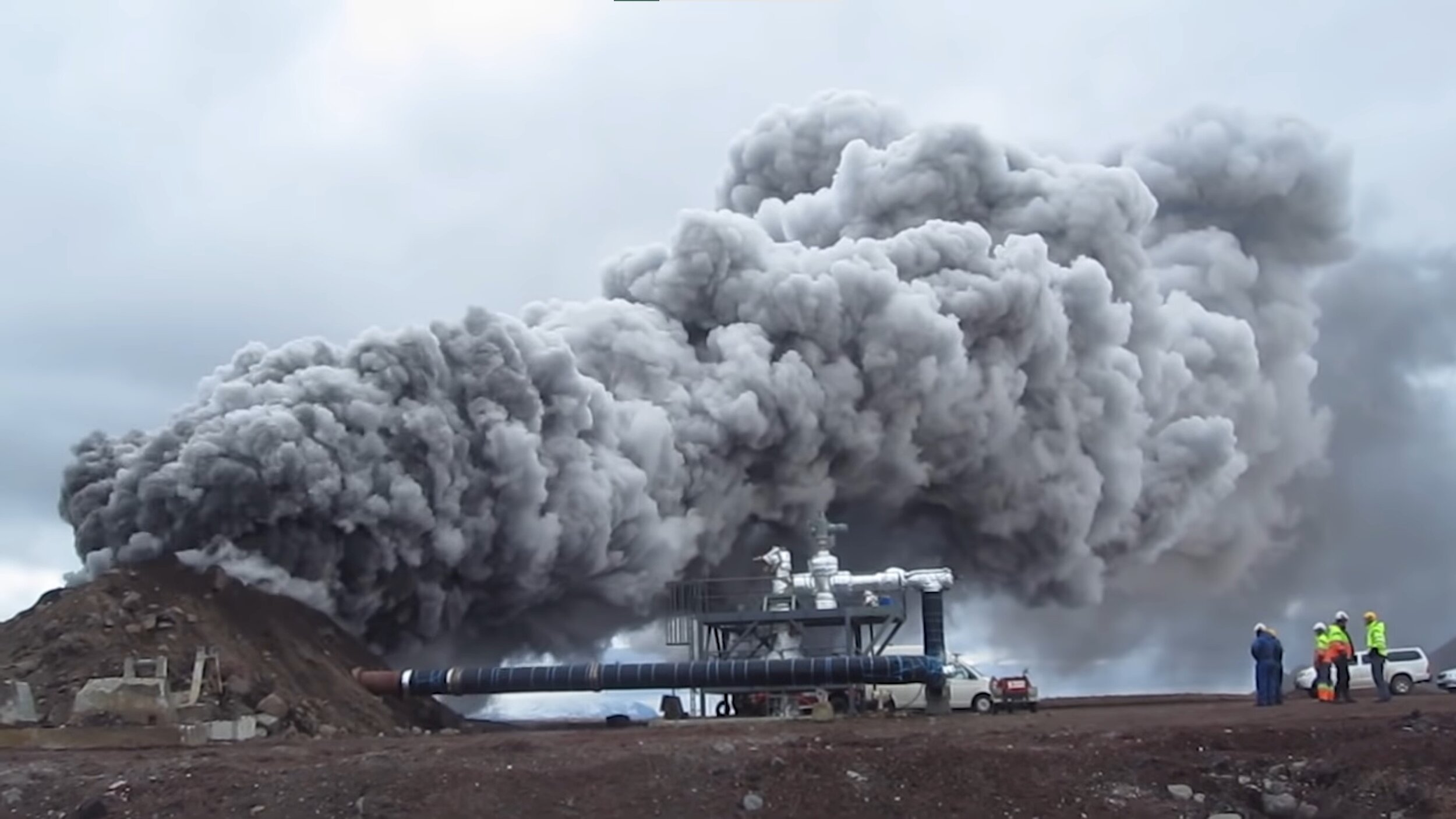Theorized as a potential future center of volcanology on Earth, a “magma well” in remote Iceland is the site of the world’s first magma observatory.
While scientists have found many substandard workarounds, direct observation and recording of magma under the Earth’s crust has never been done before, but the molten rock under the Krafla Magma Testbed is so close to the surface that such observations can be achieved.
The hopes are that the Testbed can lead to breakthroughs in volcanology and geothermal energy technology, as well as offer seismologists the ability to monitor potential eruptions much more accurately.
The Krafla Magma Testbed goes all the way back to 2009, when the state-owned geothermal energy company Landsvirkjun was looking to drill down around 5,000 meters to tap the energy from supercritical water reservoirs above magma flows as part of the Icelandic Deep Drilling Project. Their project in the remote Krafla Caldera was brought to an abrupt end when after just 2,100 meters, it was clear they struck something totally unlike what they were boring for.
“We were unable to retrieve the whole thing, but a section of the drill string that was freed was filled with fragments of freshly quenched glass. When that happens its clear we have penetrated magma,” said Sveinbjorn Holgeirsson, project manager for Landsvirkjun, in a 2015 video documentary.
Krafla is unique because never before has magma been found so close to the surface of the Earth, giving those in the field essentially a once-in-a-lifetime opportunity.
Now however, financing from the International Continental Scientific Drilling Program, and several million in additional funding from Icelandic and EU government programs has allowed the Krafla Magma Testbed (KMT) to enter a testing phase to see if a long-term magma observatory is feasible.
“What we know about magma comes from interpreting activity measured at the surface, the geology of fossil magma chambers, and laboratory experiments. The Krafla drilling project will provide direct samples and observations, helping the world to read signs of volcanic unrest better,” said Univ. of Alaska Volcanologist John Eichelberger. “It will improve civil protection for the 800 million people who live within 100km of an active volcano: be they the millions of Indonesian citizens living under the veil of the archipelago‘s active volcanoes or the millions of tourists visiting America‘s Yellowstone National Park”.
Highly-corrosive gas and superheated steam of 450°C pose supreme technological challenges, but the rewards are immense, for example 13 megawatts of geothermal energy, or enough to power 60,000 homes from just 2 boreholes over the magma well, compared to 18 boreholes in a similar situation elsewhere on the island.
By drilling through the rock–magma interface and into magma, KMT can establish where and under what conditions magma is stored beneath a volcano, and use fluid injection to measure reactions to test all manner of scientific theories. Further still, operators will eventually place sensors near and even in magma to provide direct measurements of things like a sudden rise in temperature, extent of crystallization in and around the magma, change in gas content, or increases in pressure that could lead to an eruption.
Most of us have an image of magma as an underground pit of lava, but in reality they tend to be pockets of liquid snaking between crystallized grains, surrounded by superheated gas.
Currently, KMT’s drilling partners are developing steel that can expand and contract with extreme heat of up to 1,000°C, while others are working on electronics that can endure the conditions, both of which could be used many times over to explore Venus, writes Paul Voolsen for Science. WaL
If you think the stories you’ve just read were worth a few dollars, consider donating here to our modest $500-a-year administration costs.




interesting article but dont like the same thing posted in goodnews network almost word for word with a short blurb about something happening in2026
i remove one star for both articles for making me read it twice and expecting updated info…
I gave (myself) permission to reprint my own work with some minimal changes to reflect new information. I don’t understand what about that might irritate you.